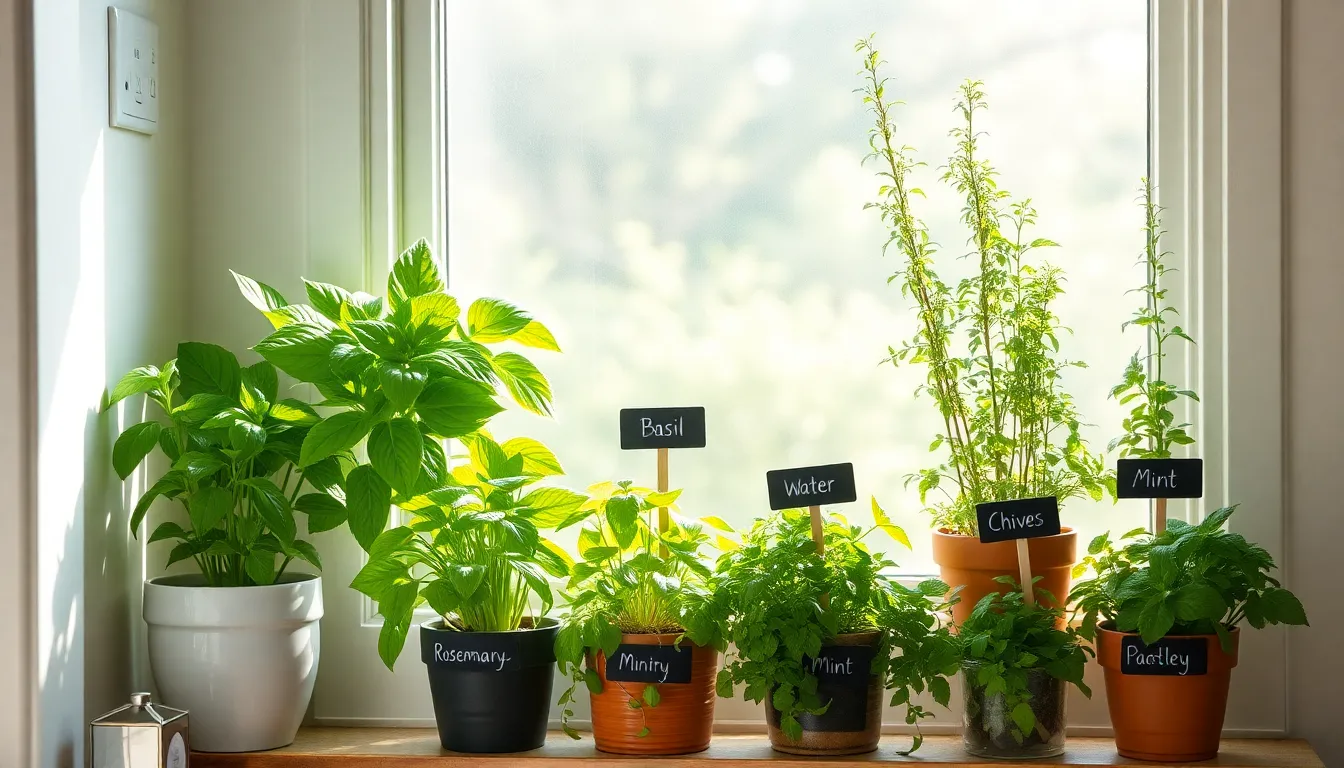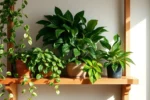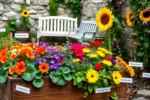Imagine stepping into your kitchen and plucking fresh basil for your pasta or a sprig of mint for your tea—all without stepping outside. Whether you’re a seasoned gardener with an impressive outdoor spread or a beginner looking to cultivate your green thumb, growing herbs indoors opens up a world of flavor and fragrance right at your fingertips.
This guide is designed to be your trusted companion, offering a treasure trove of tips to help you nurture your indoor herb garden with ease and success. As you explore these practical techniques, you’ll discover the joy of watching your plants thrive and the satisfaction of bringing a touch of nature into your home, all while enhancing your culinary creations with homegrown goodness.
With each page, you’ll gain confidence in your ability to transform any corner of your space into a lush, aromatic oasis. Embark on this rewarding journey and relish the perks of fresh herbs, from the invigorating scents they release to the vibrant flavors they add, knowing that your efforts will yield bountiful rewards.
Choose a Sunny Windowsill Spot
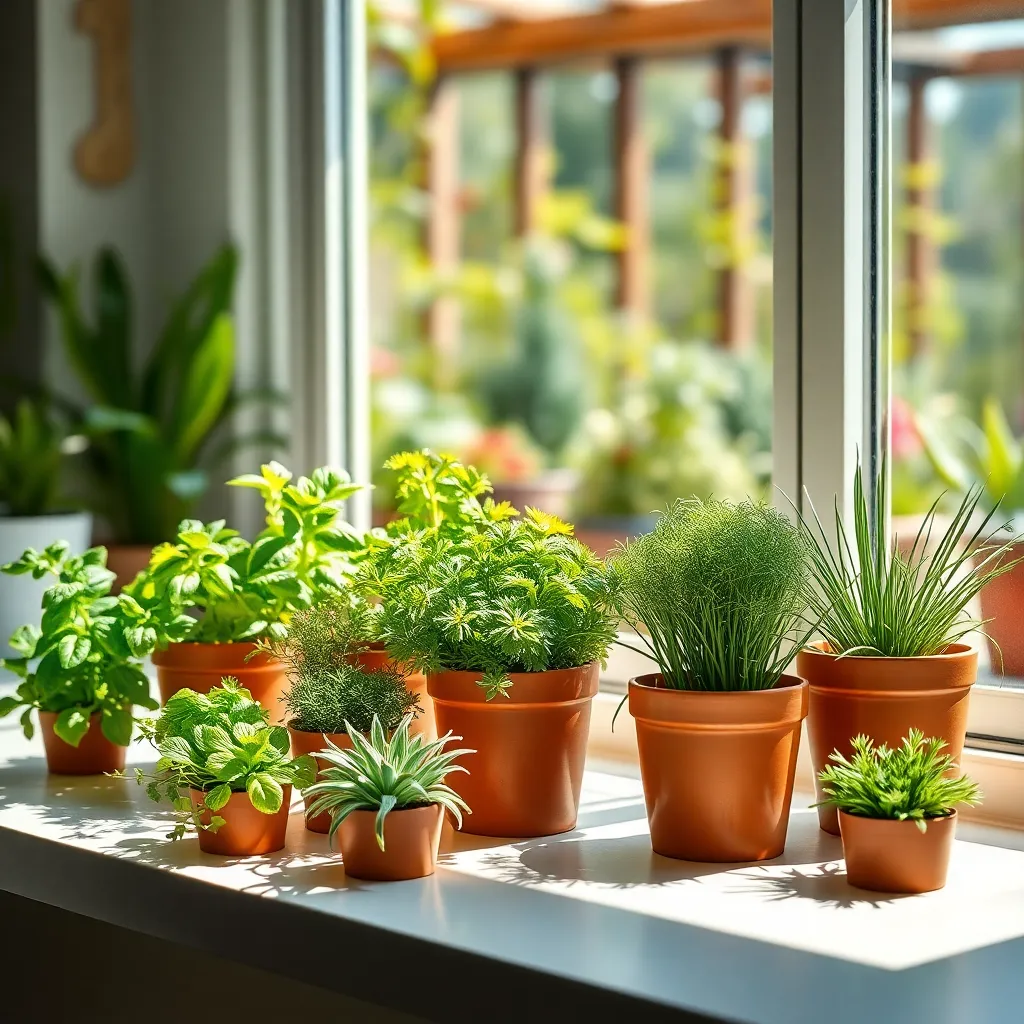
When choosing a windowsill spot for your herbs, ensure it receives at least six hours of direct sunlight daily. South or west-facing windows are typically ideal for maximizing light exposure.
For those with limited sunlight, consider using supplemental grow lights to provide adequate illumination. These lights can be set on a timer to mimic natural sunlight cycles, ensuring your herbs thrive even during shorter days.
It’s crucial to rotate your herb pots every few days to promote even growth and prevent them from leaning towards the light source. This simple practice helps maintain a balanced shape and ensures that all sides of the plant receive equal sunlight.
Make sure to use well-draining soil to prevent root rot, which can occur if water accumulates due to insufficient sunlight. A recommended mix includes equal parts of potting soil, perlite, and sand for optimal drainage.
Water Herbs Consistently and Moderately
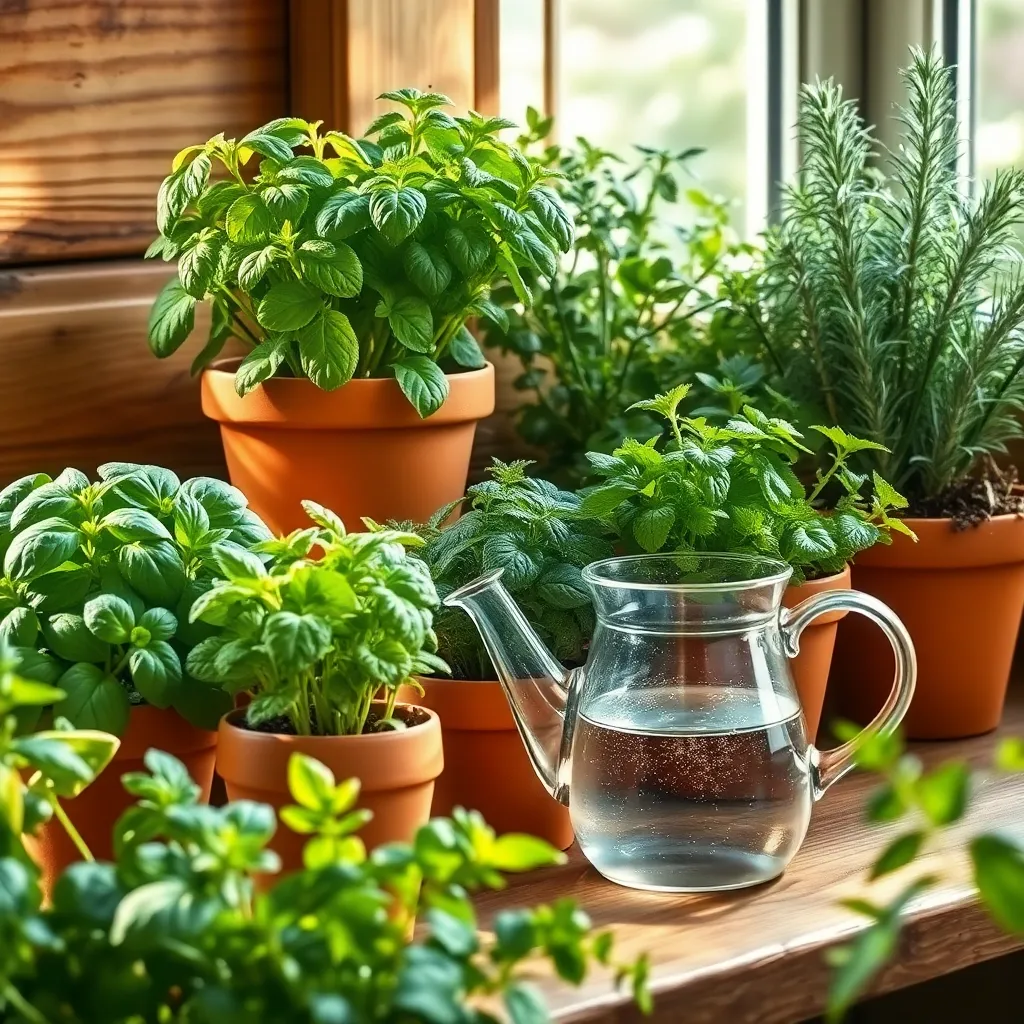
Once you’ve found the perfect sunny spot, the next step is to ensure your herbs are watered consistently and moderately. Overwatering is a common mistake, so it’s important to let the top inch of soil dry out between waterings.
Different herbs have varying water needs, but a general rule is to water them once or twice a week. To check if your herbs need water, insert your finger into the soil; if the top inch feels dry, it’s time to water.
It’s advisable to use a pot with good drainage to prevent water from accumulating at the roots, which can cause root rot. Consider adding small stones or gravel at the bottom of the pot to improve drainage if needed.
For more experienced gardeners, using a moisture meter can help you keep an eye on the soil’s moisture levels. This tool can provide a more precise reading than the finger test, ensuring optimal growing conditions for your herbs.
Rotate Pots for Even Growth
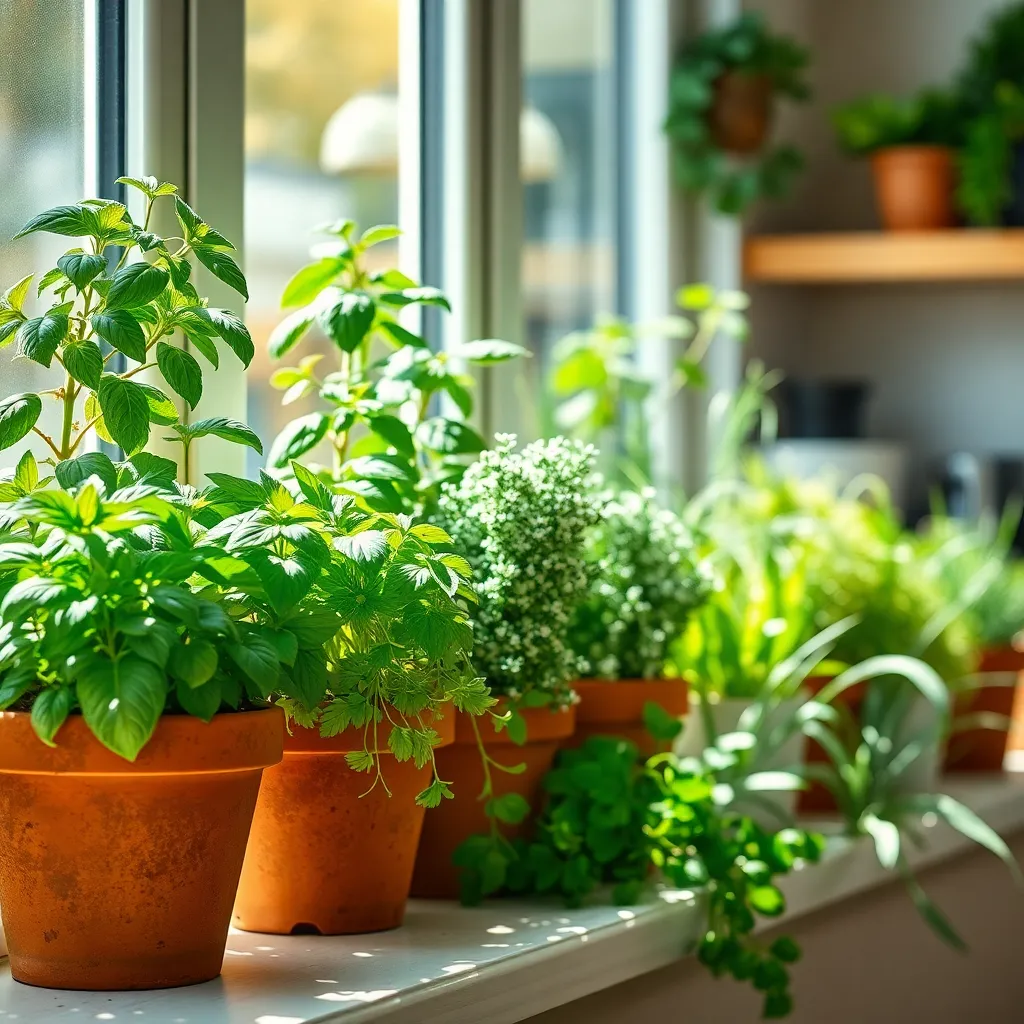
Rotating your herb pots regularly is crucial to ensuring even growth and development. Plants naturally grow towards the light, which can lead to uneven growth if they remain in the same position for too long.
To prevent this, make it a habit to rotate your pots every couple of days. A simple quarter turn will allow all sides of your plant to receive equal sunlight, promoting balanced growth.
For those using grow lights, rotating pots is equally important. Even with artificial lighting, plants can still lean towards the most intense source of light, so regular rotation ensures uniform exposure.
Advanced gardeners may consider using a lazy Susan or a turntable to make rotation even easier. This tool allows you to effortlessly spin the plant, ensuring that all sides receive equal light without the hassle of manually adjusting each pot.
Use High-Quality Potting Soil
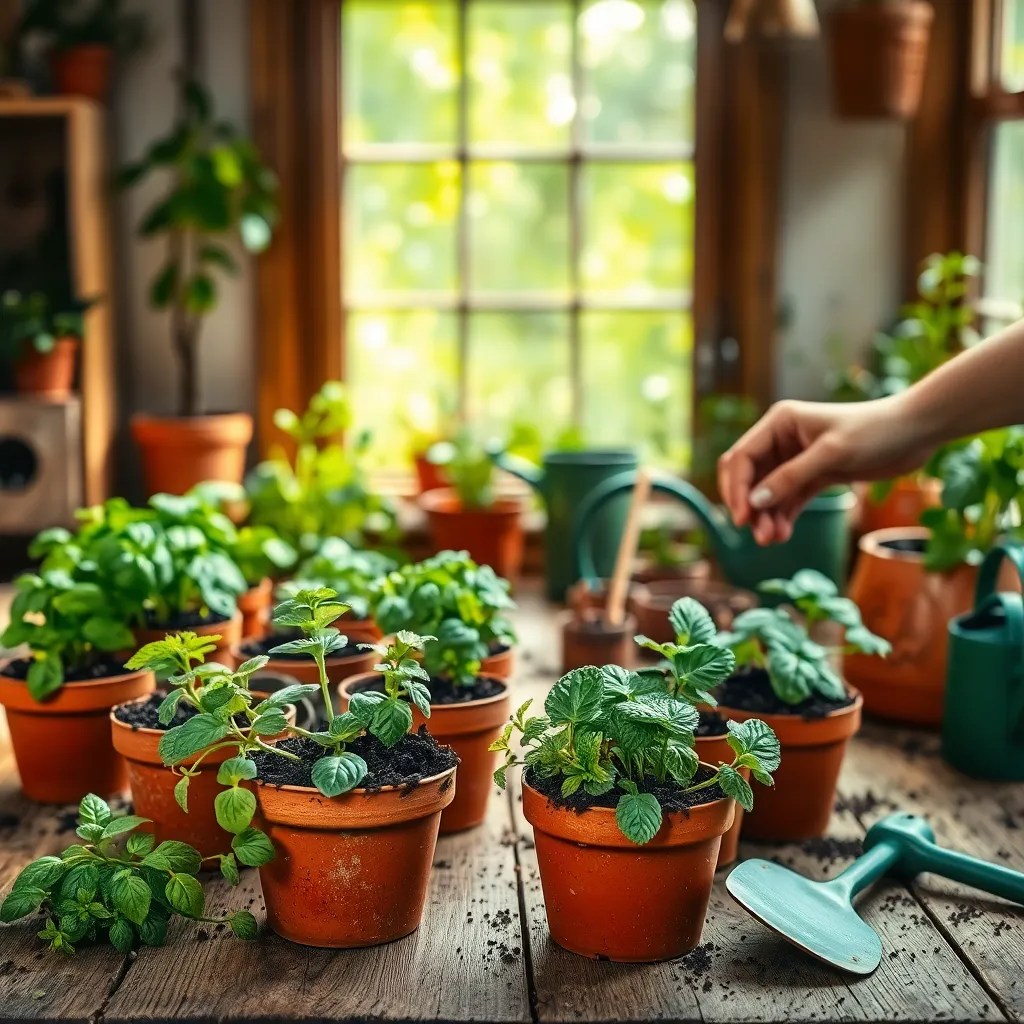
When growing herbs indoors, the foundation of success lies in using high-quality potting soil. This soil type is specially formulated to provide the right balance of nutrients, drainage, and aeration, ensuring your herbs thrive.
Start by selecting a potting mix that contains a blend of organic matter, such as peat moss or coconut coir, and perlite or vermiculite. These components help maintain proper moisture levels while preventing root rot, a common issue when using regular garden soil indoors.
For beginners, an all-purpose potting mix labeled for indoor plants is a great choice. Advanced gardeners might experiment with custom blends, adding components like worm castings for enhanced nutrient content or sand for improved drainage in larger pots.
Watering frequency is crucial when using potting soil indoors. Generally, herbs prefer soil that is consistently moist but not waterlogged, so check the top inch of soil before watering and only add water when it feels dry to the touch.
Regularly feeding your herbs with a diluted liquid fertilizer can also help them flourish in high-quality potting soil. Consider feeding every two to four weeks during their active growing season to support robust growth and flavorful leaves.
Finally, consider repotting your herbs every year or so to refresh the soil and provide more room for growth. This practice not only helps maintain soil quality but also gives you an opportunity to check the health of the root system and prune if necessary.
Trim Regularly to Encourage Bushiness
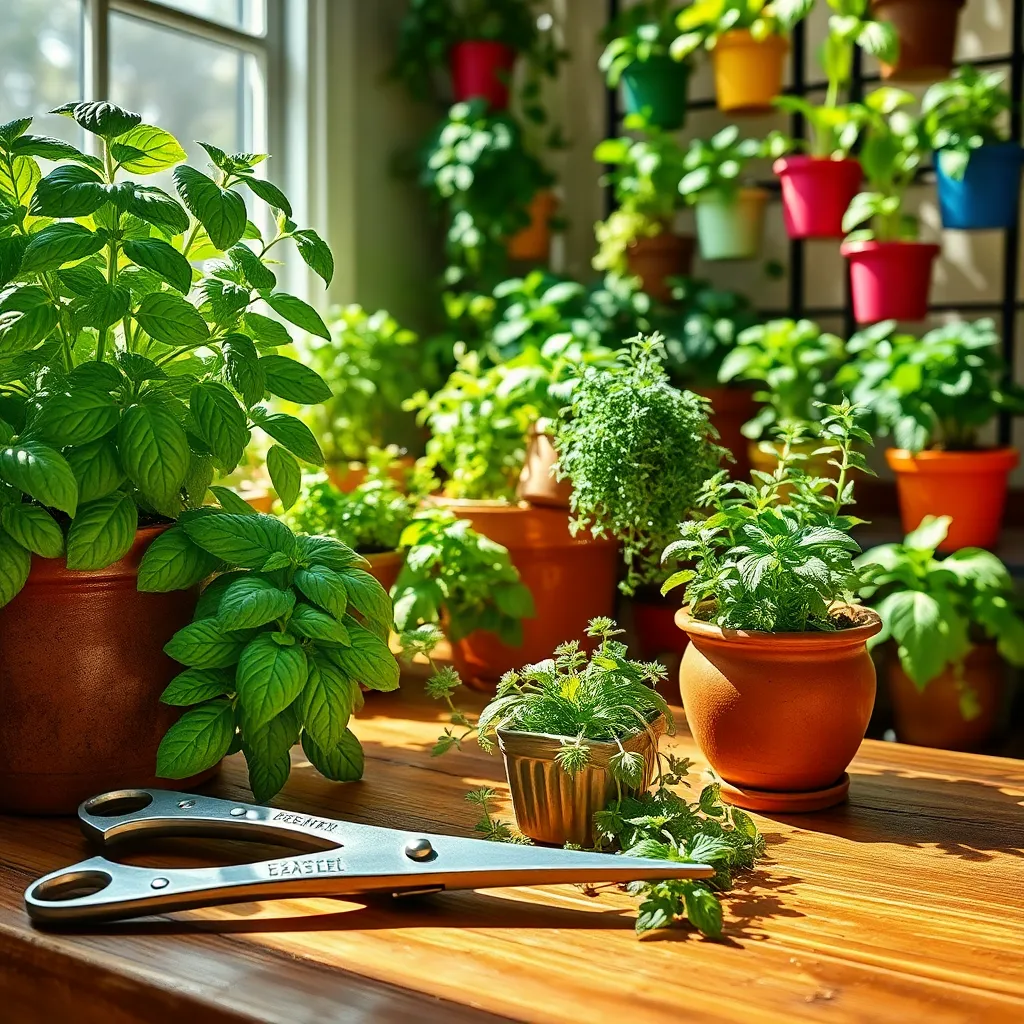
Regular trimming is essential to encourage your herbs to become bushy and full. By routinely cutting back the stems, you promote new growth that results in a denser plant structure. This practice not only keeps your herbs looking lush but also prevents them from becoming leggy and sparse. Consistent trimming helps in harvesting more leaves over time, which is beneficial for both culinary use and plant health.
Begin by pinching back the tips of your herbs when they reach about six inches tall. This technique involves using your fingers or a pair of sharp scissors to remove the top set of leaves or growing tip. Doing so encourages the plant to send out side shoots, creating a fuller appearance. If you’re growing basil or mint, for example, this method is especially effective in promoting a bushy growth pattern.
For more experienced gardeners, consider trimming your herbs just above a set of leaves or leaf nodes. This precise cutting encourages the plant to branch out more robustly at that point. A good rule of thumb is to trim about one-third of the plant at a time to avoid stressing it. This ensures the plant maintains enough foliage to photosynthesize effectively while still promoting new growth.
In addition to enhancing bushiness, regular trimming can help prevent your herbs from flowering prematurely. Once herbs flower, they tend to focus energy on seed production, which can reduce leaf growth. By keeping your herbs trimmed, you not only maintain their flavor and potency but also extend their productive growing period. Remember to clean your scissors or pruners with rubbing alcohol before each use to prevent the spread of disease.
Conclusion: Growing Success with These Plants
In nurturing your indoor herb garden, you’ve also cultivated five essential relationship principles: patience in watching your plants grow, communication in understanding their needs, consistency in care, adaptability to changing conditions, and appreciation for the small victories that lead to thriving growth. Now, take a moment to apply these insights to your personal relationships. An immediate step you can take is to choose one relationship in your life and focus on enhancing communication—reach out today, initiate a meaningful conversation, and truly listen.
Remember, relationships flourish with continuous care and attention, just like your herbs. Bookmark this article to revisit these tips whenever you need a reminder of the parallels between plant care and relationship nurturing. By doing so, you ensure that both your garden and your relationships remain vibrant and healthy.
Looking forward, embrace the journey of relationship growth, trusting that the seeds you plant today will yield rich, fulfilling connections tomorrow. Keep nurturing, keep communicating, and watch as your relationships, like your indoor garden, flourish in beautiful and unexpected ways.

